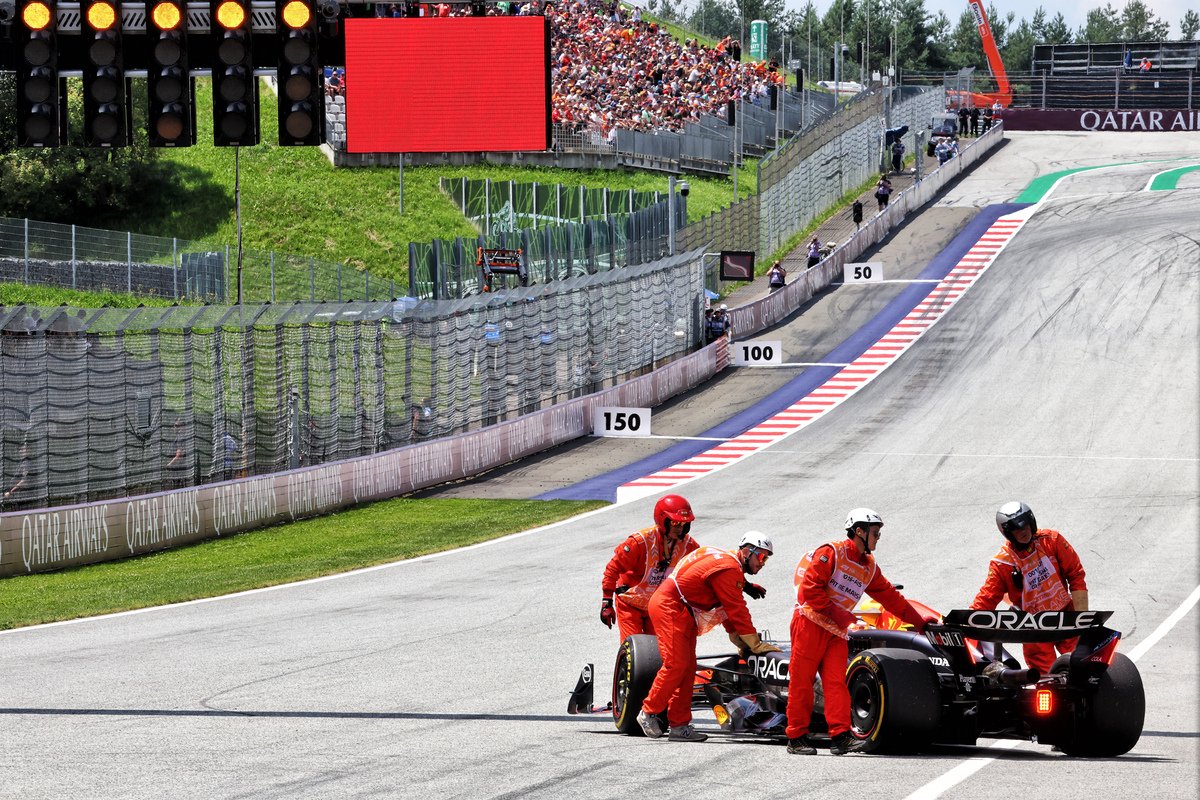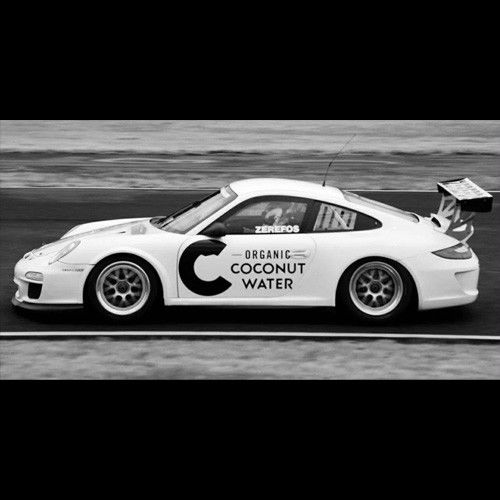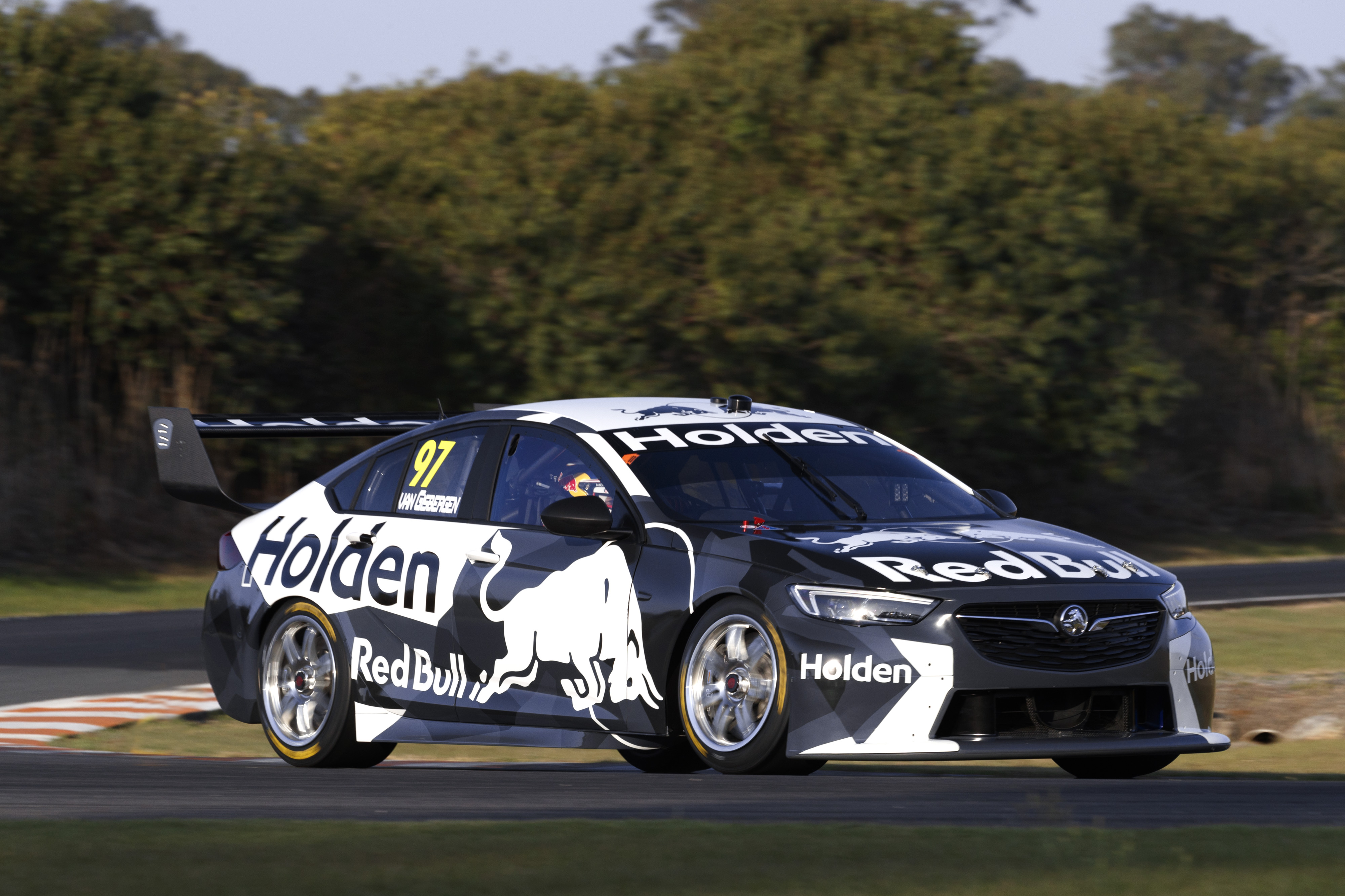

The Red Bull driver suffered an apparent sensor failure that forced him to stop out on track.
Oscar Piastri was second fastest, though Lando Norris was going faster before a mistake masked his time and left him well down the order.
Daniel Ricciardo was also down the timesheets, though how reflective that is of his pace given RB’s stated programme heading into the session is unclear.
With just a single hour of practice available to teams, owing to the Sprint format in play this weekend, it was a busy start.
It was also the first opportunity teams and drivers had to assess the placement of new gravel traps at the final two corners.
Aston Martin spent the early minutes scrubbing tyres as George Russell topped proceedings from team-mate Lewis Hamilton, the benchmark a 1:07.932s.
McLaren was running back-to-back comparisons with a new front wing for this weekend; the old design on Lando Norris’ car and the new solution for Oscar Piastri.
After 15 minutes, Russell remained fastest though his best had improved to a 1:06.386s – a time around 0.6s away from the pace laid down by Max Verstappen in the corresponding session a year ago.
For the most part, the hard and medium rubber was preferred among teams, though Williams broke from convention after 10 minutes when it swapped Alex Albon and Logan Sargeant onto soft tyres.
Hamilton went fastest with 20 minutes gone, improving through the final two-thirds of the lap to better his team-mate by 0.132s.
The two Mercedes drivers headed proceedings from the Red Bull Racing duo of Max Verstappen and Sergio Perez when the red flag was shown after 32 minutes.
It was called for as Verstappen crawled to a halt on the front straight.
He’d reported the “same engine fault” over the radio, the Dutchman rolling backwards down the hill next to the pit wall.
It was a canny move as it allowed officials to clear his car through an opening on the front straight, making recovery to the garage trivial.
The issues in his car coincided with a change on the steering wheel as he entered the penultimate turn.
Once back in the lane, mechanics pushed him back to the garage as the session resumed in quick order, 23 minutes remaining on the clock.
Verstappen was quickly sent back out on track with a set of medium tyres fitted, his issues seemingly resolved.
At RB, Yuki Tsunoda complained about the steering column in his car while Ricciardo spent periods in the garage.
The team was looking to understand its lack of pace from Spain, where an upgrade package was deployed.
That saw its two cars running a mixture of component spec as engineers looked to gather data to validate their theory as to why the car struggled in Barcelona.
With 10 minutes to run, Tsunoda was 15th and Ricciardo at the foot of the timesheets, 1.6s off the outright pace.
In the final minutes, Sauber swapped to the soft tyres, while Williams went the other way as it reverted to the medium rubber.
Aston Martin and RB also bolted on the red-walled rubber, with Tsunoda rising to third best with a 1:06.579s.
That quickly became fourth as Lance Stroll went second best with a 1:06.384s, while Ricciardo could only manage a 1:06.692s.
The flurry signalled the start of qualifying simulations.
Verstappen shot to the top of the timesheets with a 1:05.685s, bumping Charles Leclerc who’d temporarily held top spot.
Piastri went second best, 0.276s away from Verstappen’s time with three minutes remaining.
A mistake from Norris saw the Brit in the gravel at Turn 4 as he ran wide of the apex and ended up touring through the gravel trap on corner exit.
He’d been fastest of anyone through the first sector before getting greedy under brakes into the right-hander to pinch the left-front and skate long.
The session ended little more than a minute later, Verstappen fastest despite his interrupted session.
Piastri was second from Leclerc, then Sainz and Hamilton, who’d elected not to run a set of soft compound tyres.
Norris was 13th, though failed to deliver a soft tyre lap, while Ricciardo was 16th and 1.277s off the pace – and almost 0.5s down on his RB team-mate.




















Discussion about this post